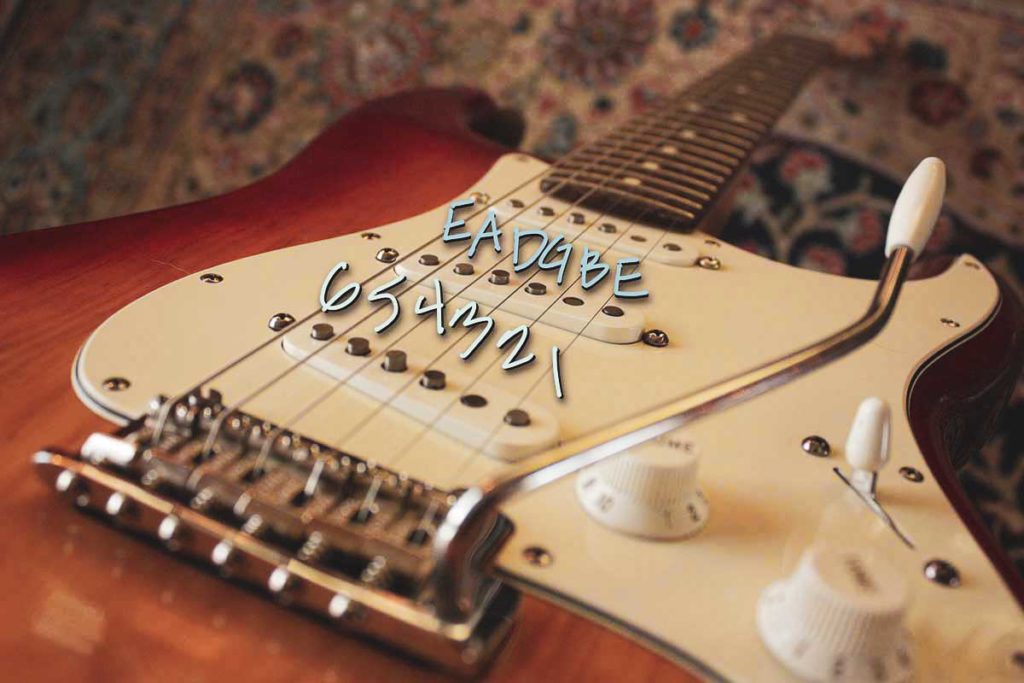This is a very simple trick for tuning a guitar. This will help adjust tension across the strings evenly which will save time and offer more consistent tuning.
While this technique has the most impact on electric guitars that have floating tremolo bridges, it is still a great way to tune any guitar and is the only way I tune my guitars now.
The only other caveat is that it makes the most sense when using a tuner. There are many times when I do a quick tune check just running straight down the strings 6 to 1, and tuning based on the intervals between the strings just using my ear.
The trick is to tune strings in the order 6, 1, 5, 2, 4, 3 or E, E, A, B, D, G.

Again, doing this adjust tension in a uniform manner so tuning takes fewer passes across the strings.
On a floating bridge, the strings are secured to the bridge, and the bridge is secured to the body of the guitar using heavy springs. This entire system pivots, often times around two points. With there being just shy of 100 pounds of pressure from the strings, when the tremolo is balanced, that tension is doubled on the pivot points.
This is a pretty delicate system, and any major tension change is going to have a significant impact on the strings on the other side. Take for example a guitar that is tuned half a step down, and you want to bring it up to standard tuning. If you tune strings 6 and 5 and then check what has happened to string 1, you’re going to notice the tension has dropped significantly. Now, if you continued in order 6-1, then returned to string 6, you will find that 6 is no longer where it was a couple seconds ago. This is because the tension across this weird see-saw wasn’t applied evenly.
Take another common example: normal tuning down to Drop D. Now, my tuning trick doesn’t do anything here (as you’re only changing one string) but it illustrates the point well. Take your guitar that is in tune and drop string 6 from E down a whole step to D. Now see where your high E, string #1 is. It is going to be off, along with the strings in between with increasing severity as you get closed to the dropped (lower tension) D.
As I mentioned, this is a great trick but applies most to electric guitars with a floating bridge. These are examples of floating bridges below.

This isn’t meant to be a post about the pros and cons of floating trems, but one thing to note is that that type of bridge is much more susceptible to tension changes. That includes the common playing technique of string bends. If you wrench on the strings and make a big old blues bend, any other string that is ringing will go flat as tension is increased on the bending string and the bridge is lifted up.
This isn’t necessarily a con of the floating trem, but is certainly something to be aware of in understanding how certain techniques are applied differently to different guitars.
Next time you’re tuning your guitar, try this technique out and see what you think. It has saved me a lot of tuning time headaches, and I hope it will help you too. In the meantime… Get out of here! Go play that guitar!
